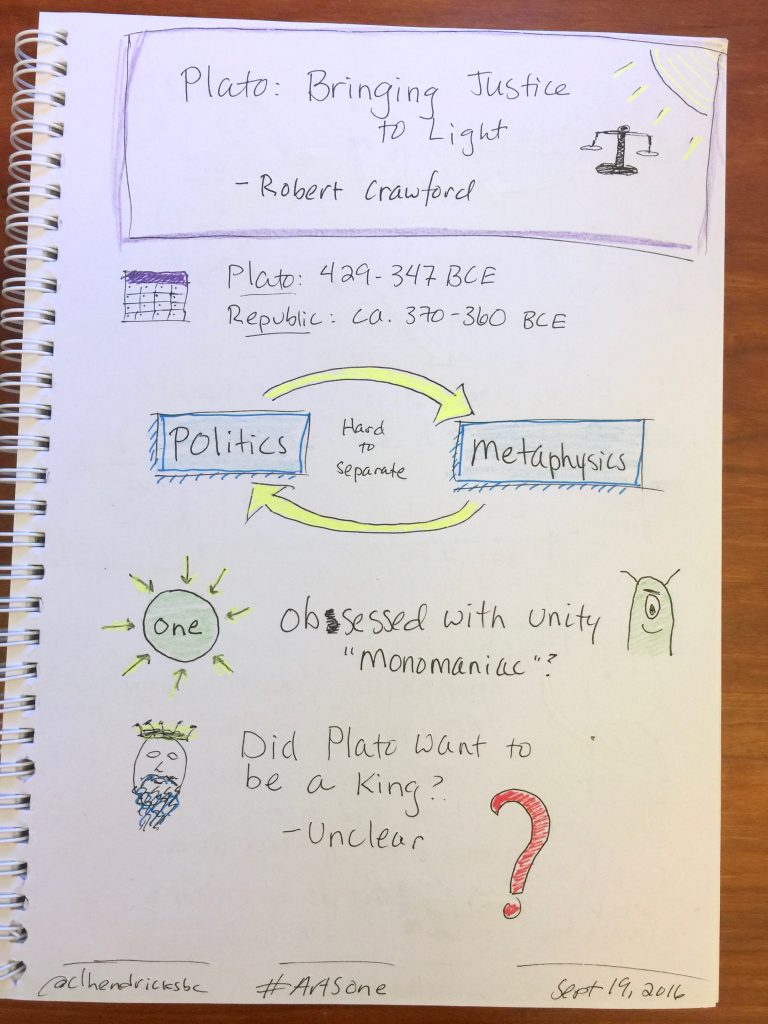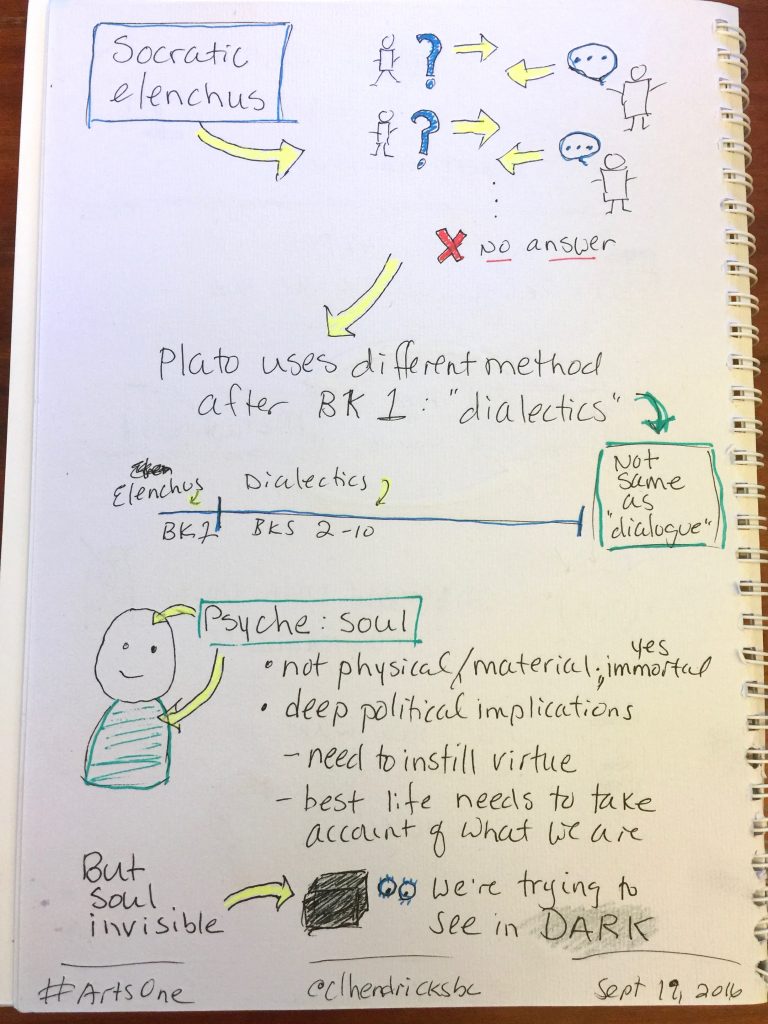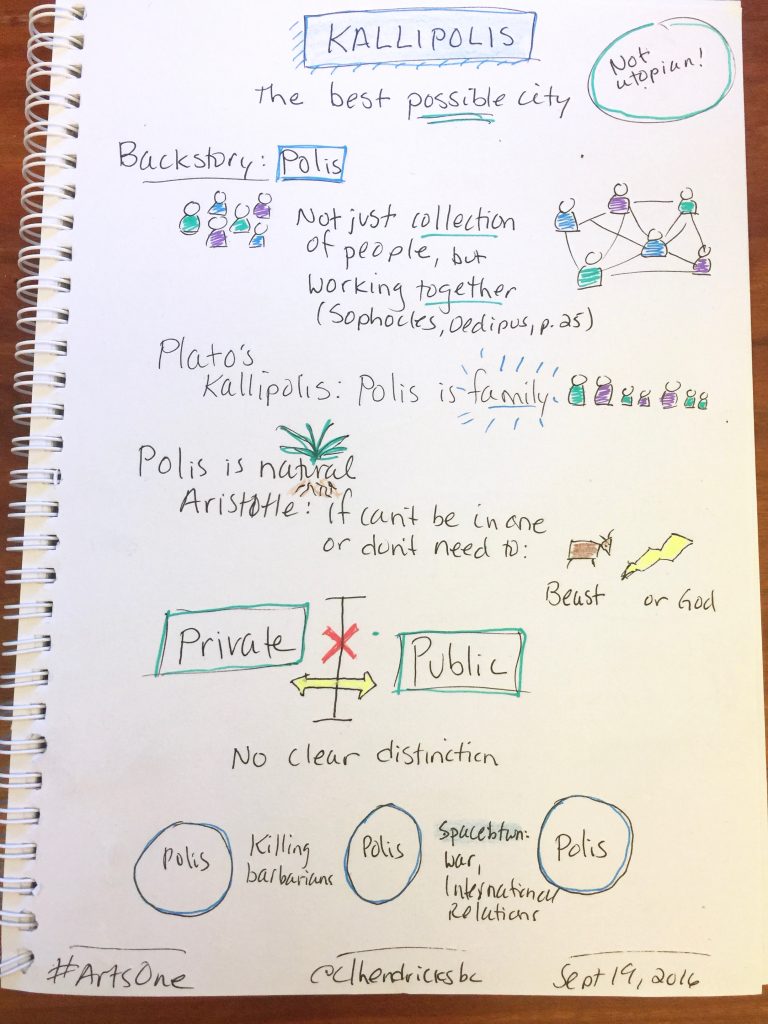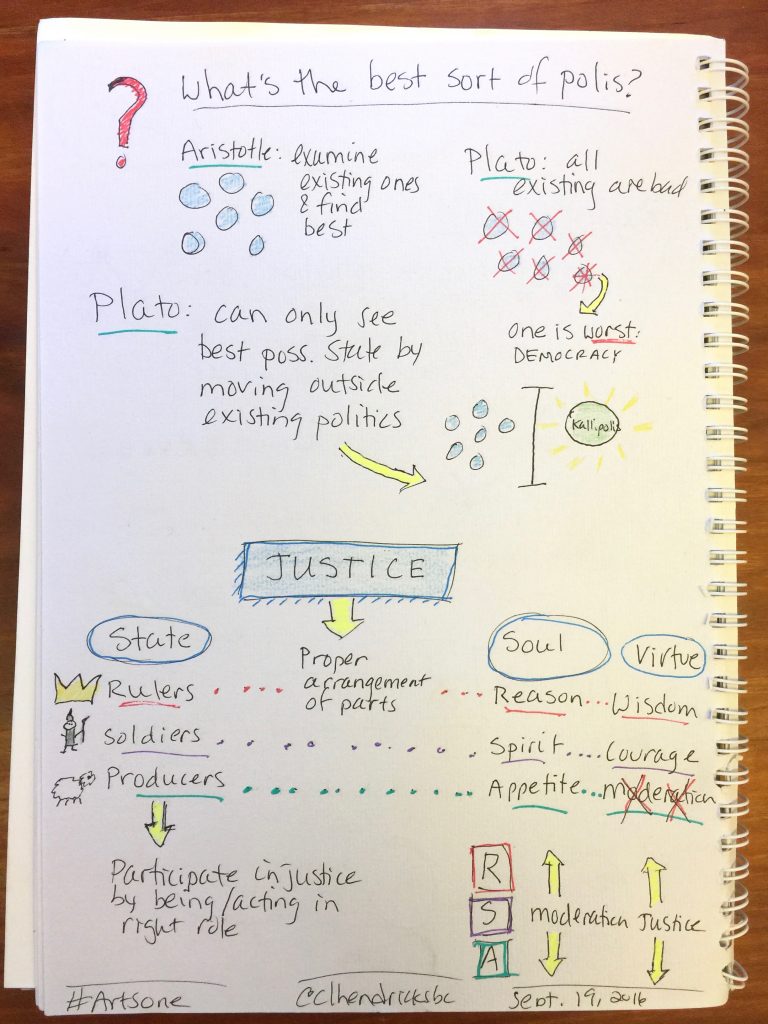In Arts One last week we discussed Sophocles’ Oedipus Rex. We put a bunch of questions/topics for discussion on the board and didn’t get to all of them (unfortunately, not an uncommon occurrence in Arts One, but fortunately, it’s because students are so engaged and want to discuss!).
I wrote a question on the board that I had myself:
What of the Oedipus story is included in the action of the play and what occurs before or after? What takes place on stage versus off? And what do these say about what the play is about, what it’s focused on, and what message we might get from it (if any)?
We didn’t have time to discuss this question, so I thought I’d take the opportunity of doing a blog post to provide some of my own thoughts. As with all texts we read in Arts One, my interpretation is only as strong as my evidence–like those of students as well. This is to say: I am not arguing that mine is the only way to answer this question, just because I happen to be the instructor in our seminar group.
What takes place within the action of the play itself?
There are numerous elements to the Oedipus story, including:
- the oracle to Laios and Jocasta that their son would kill his father, and his subsequent abandonment to die as a baby
- his growing up in Corinth thinking Polybos & Merope are his biological parents
- the oracle’s message to him that he was going to kill his father & marry his mother
- his killing of Laios, answering the riddle of the Sphinx, marrying Jocasta
- the plague in Thebes, Oedipus trying to find the murderer of Laios and in turn discovering who he is, what he has done, and that the oracle was right; his self-blinding and asking to be exiled from Thebes
- his exile from Thebes and what happens afterwards
Only the second to last bullet point, above, is what takes place within the action of this play (Sophocles’ Oedipus at Colonnus and Antigone address the last bullet point). More specifically, what happens is that Oedipus vows, as king, to do what Apollo said in his oracle to Kreon and find the murderer of Laios, and he continues to search and search for the truth until he does. It’s kind of like a murder mystery in modern terms, except that the audience knows all along that Oedipus himself is the murderer.
So we might say that one focus of the play, at least, is on the seeking of knowledge, and gaining self-knowledge. One could argue that it’s also about a king trying to save the citizens of his state from a plague, trying to do fulfill his kingly duties by doing what the god Apollo commanded–find the murderer of Laios and punish him.
But there’s another aspect to what happens within the action of the play as well: there is a focus on the issue of the knowledge of humans vs. the knowledge of gods. Oedipus is at first treated as a god by the priest in the beginning (and Oedipus himself seems to be answering their prayers as if he were a god at the top of p. 33 in our version), and yet the audience knows that his knowledge falls far short of that of the gods. So we see him not only gaining knowledge and self-knowledge by the end of the play, we see him in the process realizing that he is not at the same level as the gods (though, at the end, he knows as much as they do, so do what you will with that …).
The Chorus states that only Zeus and Apollo see and understand “the dark threads crossing beneath our life” (46), and then later they reflect on the nature of human life and how we are all like Oedipus:
man after man after man
o mortal generations
here once
almost not here
what are we
dust ghosts images a rustling of air
nothing nothing
. . . . . . . . . . . . . . . .
we are you
we are you Oedipus (78)
According to the chorus, then, Oedipus does not have the same knowledge the gods do, and neither do the rest of us. Humans are only “dust ghost images a rustling of air”–very little, or perhaps “nothing.”
Similarly, he comes to realize, during the play, that the oracles all were true (and that Teiresias was right about what would happen to him). Despite Jocasta (and Oedipus) saying that we don’t need to pay attention to oracles, it turns out that they were right even when humans think they have discovered that they aren’t.
What takes place off stage or on stage?
Partly this question is going to be answered by the nature of staging drama in ancient Athens. There was a stage with very little in the way of backdrops or props. From what I understand, showing Jocasta hanging herself or Oedipus blinding himself would have been difficult or just not part of the normal way of doing plays at the time. Still, we can maybe glean a little from what takes place onstage vs. off stage in the play.
On stage
- Mostly conversations: Oedipus and the chorus, Oedipus and Kreon, Oedipus and Teiresias, Oedipus and Jocasta, Oedipus and the shepherd, etc.
- Mostly Oedipus is on stage except a few times when he’s not there
- The chorus is sometimes on stage alone
- Jocasta also prays to Apollo without Oedipus at one point
- Jocasta, the chorus, and a messenger speak without Oedipus; she learns of Polybos’ death before Oedipus does
- A servant comes out of the palace to tell the chorus & audience that Jocasta has hanged herself and Oedipus has blinded himself
Off stage but still within the action of the play itself
- Oedipus sends for Teiresias (he says on p. 36 that he has done so, but Teiresias hasn’t come yet)
- Kreon hears of Oedipus charging him with treason; on stage p. 46 he says he has come to answer those charges
- Polybos dies; onstage, a messenger comes and tells Jocasta and then Oedipus
- Jocasta hangs herself; Oedipus blinds himself
So we see that most of the action onstage is Oedipus talking to others, and most of it is him learning the truth about the murderer of Laios (himself). What happens off stage are mostly things that don’t have to do with Oedipus trying to find the truth (except for the first bullet point, above, but that’s a fairly trivial action). This again suggests that Oedipus and his quest for knowledge is at least one of the foci of the play.
Conclusion
I don’t know if this exercise has revealed anything that people weren’t thinking already, but I think it’s useful when one is considering a play to think about what parts of a story the dramatist chooses to include within the action of the play, what takes place onstage and off, to glean some insight into what the play is about. I may try this again with the next play we study in Arts One this year, Brecht’s Galileo. And I’ll be thinking similiar things about the films we watch. And I suppose really, one could also do something similar with novels…
I’d love to hear your thoughts, comments, questions, disagreements if you have them! Just write in the comment area, below.





